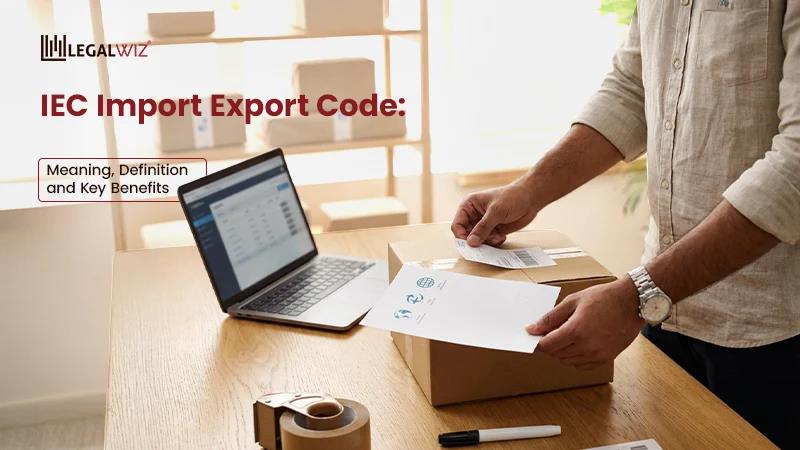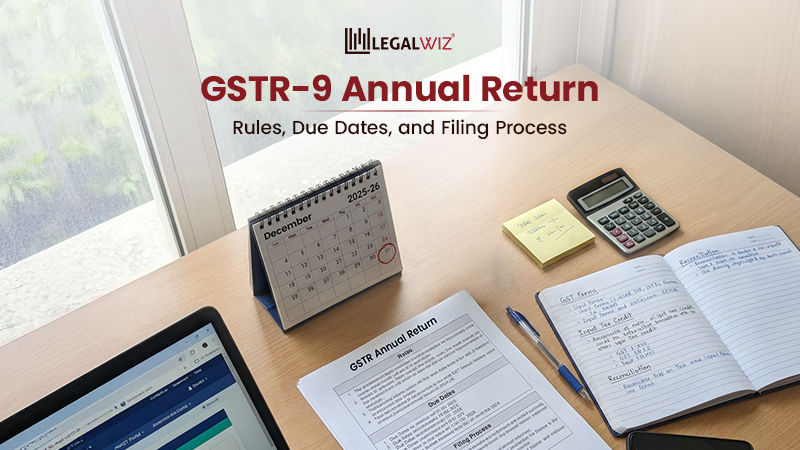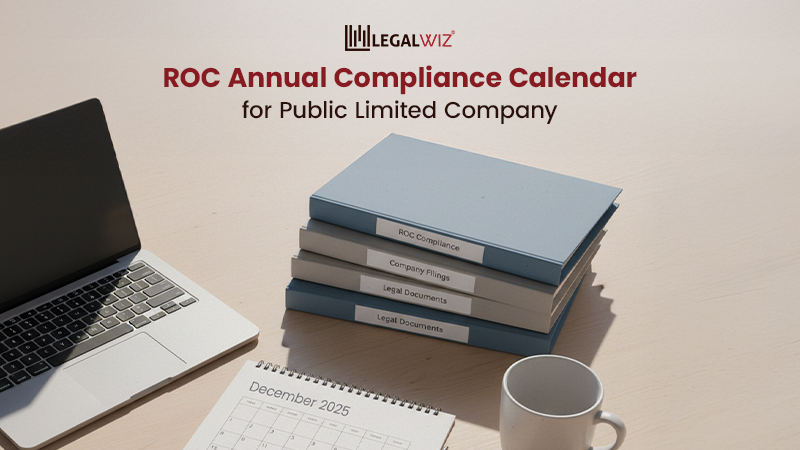New Income Tax Rules 2025–26: What’s Changed in ITR Filing This Year
New Year, New Tax Rules: What’s Cooking in the ITR Kitchen for 2025–26?
If you thought income tax was a one-and-done chore, you could forget till March, think again! The ITR filing season is back, and this time, it’s brought some new flavours to the mix.
Every financial year brings a few tweaks, but Assessment Year 2025–26 is extra spicy with updates. Whether you’re a salaried professional, a freelancer juggling invoices, or just someone who panics when they hear “Section 80C,” this year’s changes are worth your attention to file income tax return online.
From updated disclosure norms to subtle (but important) shifts in deductions and reporting rules, the Income Tax Department has clearly decided that transparency is the new black. Oh, and if you’re someone who loves a deadline extension, good news! Non-audit taxpayers now have until 15th September 2025 to file their returns.
So, before you hit snooze on your taxes, take a moment to understand what’s new, how it affects you, and why filing right matters, and if you’re wondering why you should bother at all, here’s a quick look at the benefits of filing ITR.
Now, let’s dive into what’s changed and how to stay on the IT Department’s good side, without breaking a sweat.
1. New Rule – More Proof, Please! (Extra Docs Needed for Tax Deductions)
Remember when filing your ITR meant punching in a few numbers, clicking a few boxes, and calling it a day? Not anymore. For AY 2025–26, the Income Tax Department wants you to show your work, not just the final answer.
If you’re planning to claim deductions, like on your investments, insurance, or home loan interest, you’ll now need to attach annexures: official proof-packed add-ons that confirm you’ve actually made those payments. Think of them as the tax version of homework attachments, “Yes sir, I’ve done it. Here’s my proof.”
Confused by all the jargon around deductions, exemptions, and tax regimes? You’re not alone. Get to know the basics with this handy guide on 5 important income tax terms you need to know — because decoding taxes shouldn’t feel like reading a foreign language!”
These documents apply to some of the most commonly used deduction sections:
- Section 80C – Investments like LIC, ELSS, PPF
- Section 80D – Health insurance
- Section 80CCD(1B) – NPS contributions
- Section 24(b) – Home loan interest
So why the sudden paperwork push? Because, let’s be honest, some taxpayers were getting a little too creative. Now it’s all about transparency, traceability, and ticking the right boxes.
In short:
- No proof = No deduction
- Proper annexure = Happy tax officer
- You = Safe, sorted, and refund-ready
Okay, so we need these new annexures… but what exactly do they look like? Let’s peek inside the forms and see what the taxman really wants this year.
2. New Disclosure Requirements in ITR Filing: Changes You Can’t Skip
Alright, so now we know we can’t just say we paid our premiums or EMIs, we’ve got to prove it, and that too in a format the tax department actually likes. Below is the cheat sheet for what each section now demands in the name of “disclosure.” Ready? Deep breath, here we go:
2.1. Section 24(b) – Interest on Home Loan
If you’re claiming a deduction on the interest you pay on your home loan, you can’t just say “I’m paying EMIs.” The IT Department wants to see the details.
Why It Matters: This one’s a favorite for homeowners, and now they want loan info laid out like a mortgage CV.
Details to be disclosed:
| Requirement | What You Need to Provide | Why They Want It |
| Loan Source | Bank or NBFC | To confirm it’s a valid lender |
| Lender’s Name | Full name of the institution | Cross-verification |
| Loan Account Number | Your specific home loan number | For tracking |
| Loan Sanction Date | When was the loan approved? | To confirm the eligibility timeline |
| Total Loan Amount | Full amount borrowed | To assess claim size |
| Outstanding Loan (as on 31 Mar) | Remaining loan balance at the end of FY | Snapshot of current liability |
| Interest Claimed | Interest amount you’re claiming under 24(b) | What you’re deducting |
Tip: Get this data from your loan interest certificate — most banks issue it online now.
2.2. Section 80C – Investments (Your ₹1.5 Lakh Toolkit Just Got Homework)
Ah, 80C — the golden child of tax-saving! From LIC policies to ELSS funds, PPF accounts to NSCs, it’s the go-to for almost every taxpayer looking to save up to ₹1.5 lakh. But if you thought you could just throw in a number and call it a day, think again.
What’s Changed?
From AY 2025–26, you now need to quote the exact policy number, account ID, or folio number for every investment you’re claiming. The tax department has basically said: “Cool story, bro… now prove it.”
| Investment Type | What to Disclose |
| LIC Policy | Policy Number |
| ELSS Mutual Fund | Folio/Transaction Number |
| PPF/NSC | Account or Certificate ID |
So, no more vague “I did ELSS” declarations. Whether you invested through a broker or an app, you’ve got to dig out the actual documents. A cropped screenshot with half a folio number? Nice try, but nope.
Pro Tip: Make a “deduction doc folder” on your desktop. Trust us, future you (and your CA) will thank you.
2.3. Sections 80CCC, 80CCD(1), 80CCD(1B) – Pension Contributions
Planning for retirement? Excellent. Claiming a deduction for it? Even better. But if you’re using Sections 80CCC or 80CCD to reduce your tax burden, this year, you better come with receipts and your PRAN.
What’s New?
Anyone claiming pension-related deductions must now disclose key account details. Especially if you’ve contributed to the National Pension Scheme (NPS), you must mention your PRAN (Permanent Retirement Account Number); without it, your claim simply won’t go through.
| Plan Type | What’s Mandatory |
| NPS (under 80CCD) | PRAN Number (mandatory) |
| LIC/Other Annuity Plans | Policy Number (under 80CCC) |
Think of PRAN like your pension’s Aadhaar number — it identifies your NPS account uniquely across India’s tax system. Even for LIC’s annuity plans, the policy number must be disclosed in full.
Fun Fact: If you don’t know your PRAN, you can find it in your NPS login or on the welcome letter from NSDL.
So yes, saving for the future is smart. But filing for it? That now needs specifics.
2.4. Section 80D – Health Insurance Premium (Now With Added Formalities)
If health is wealth, then insurance is the bank locker. Under Section 80D, you can claim deductions on the premium paid for medical insurance for yourself, your family, and even your parents. But now, just paying isn’t enough — the taxman wants names and numbers.
What’s New?
Starting this year, you’ll need to mention the name of the insurer and the exact policy number when claiming your deduction.
| What You Need | Why They Need It |
| Insurance company name | To verify the insurer’s legitimacy |
| Policy number | To match the premium with the person |
This ensures people aren’t claiming on expired, fake, or someone else’s policy (yep, that was a thing). You’ll need to do this for every covered member — self, spouse, kids, and parents.
Quick Tip: Check your policy document or insurer’s mobile app — the policy number is usually on the first page.
Don’t forget: the extra ₹25,000–50,000 deduction is worth it — but only if your details check out.
2.5. Section 80DD – Caring for a Dependent with Disability
This deduction is for those taking care of a dependent with a disability, and rightfully so, it’s one of the most empathetic deductions in the Income Tax Act. But with new rules, empathy needs to be paired with evidence.
What’s New?
The government now requires disability details in a prescribed format, certified by a medical authority. No casual notes, no verbal claims.
| Dependent Details | Required Format |
| Nature and extent of disability | Government-approved certificate |
Why? Because earlier, some claims lacked proper documentation, or worse, misused this provision. Now, it’s standardised and secure.
Keep in Mind: If the disability is 40% or more, you’re eligible for the deduction — but only with valid proof.
So if you’re taking care of someone, hats off to you. Just make sure the paperwork’s as strong as your support.
2.6. Section 80DDB – Treatment for Specified Diseases
Claiming medical expenses for serious illnesses like cancer, Parkinson’s, or chronic renal failure? Under 80DDB, you’re allowed deductions, but only for listed diseases. And the IT Department wants you to choose from their approved list. No freestyle diagnosing allowed.
What’s New?
You’ll now need to select the disease name from the list when filing your return. Only recognised conditions are eligible.
| Disease Group | Examples (Where Applicable) | Who Can Prescribe |
| Neurological Disorders (where the certified disability is 40% or more) | Dementia, Dystonia Musculorum Deformans, Motor Neuron Disease, Ataxia, Chorea, Hemiballismus, Aphasia, Parkinson’s Disease. | Neurologist with DM or an equivalent recognized degree by the Medical Council of India |
| Malignant Cancers | — | Oncologist with DM or an equivalent recognized degree by the Medical Council of India |
| Full-Blown AIDS | Acquired Immuno-Deficiency Syndrome | Specialist with a PG degree in General/Internal Medicine (or equivalent degree by the Medical Council of India) |
| Chronic Renal Failure | — | Nephrologist (DM) or Urologist (MCh in Urology or equivalent) |
| Hematological Disorders | Hemophilia, Thalassemia | Specialist with DM in Hematology (or an equivalent recognized qualification) |
This helps prevent random or unsupported claims (no, “Monday blues” is not on the list). You’ll also need a certificate from a specialist working in a government hospital.
Don’t forget: You must attach this certificate if your claim exceeds ₹40,000 (or ₹1,00,000 for senior citizens).
So yes, treatment is expensive — but now, claiming the deduction just got structured. Keep your documents ready, and let your form do the talking.
2.7. Section 80E – Interest on Education Loan (Because Brains Aren’t Cheap)
Education loans are like samosas, everyone has one, but not everyone knows what’s inside. Under Section 80E, you can claim a deduction on the interest paid on your student loan for higher studies in India or abroad. But in AY 2025–26, just saying “I took a loan” won’t cut it.
What’s New?
The taxman wants the full story — source, status, and stats.
| Loan Details You Need to Share | Why They Want It |
| Loan source (bank/NBFC) | Validate authenticity |
| Bank name | For verification |
| Loan account number | Match against payments |
| Sanction date | Ensure it qualifies (8-year rule) |
| Total loan amount | Cross-check eligibility |
| Outstanding loan as of 31st March | Current balance snapshot |
| Interest paid during the year | The actual deduction you’re claiming |
Quick Tip: Only the interest (not principal) qualifies. Also, the loan must be in your name, not in Dad’s name for you.
2.8. Section 80EE – First-Time Home Buyer Perks
First-time buyer? Congrats! Under Section 80EE, you get an additional deduction of up to ₹50,000 on home loan interest, over and above Section 24(b). But the keyword here is “first-time,” and yes, the IT department is checking.
What’s New?
You’ll need to share the same set of disclosures as in Section 80E, but tailored to home loans.
| What to Share | Why It’s Needed |
| Lender details (Bank/NBFC) | Ensure the loan is legit |
| Loan account number | Track and verify |
| Sanction date | Should fall within the eligible window |
| Loan amount | Must be below the prescribed limit |
| Interest paid (under 80EE) | Your extra deduction claim |
Heads Up: You must not own any other property on the sanction date. So, no “flat in mom’s name” backdoors allowed.
2.9. Section 80EEA – Affordable Housing Loan (Because Buying Small Can Save Big)
This one’s the cousin of Section 80EE — but for affordable housing under government-specified limits. If you bought a house under the Pradhan Mantri Awas Yojana range, 80EEA gives you an extra ₹1.5 lakh deduction on interest paid.
What’s New?
The annexure asks for all the usual suspects: lender, account, loan amount, interest paid, but it also flags the property type and value.
| Disclosure Needed | Why It’s Required |
| Property address & type | To ensure it’s residential |
| Loan sanction date | Must be within the cut-off period |
| Property stamp duty value | Must not exceed ₹45 lakh |
| Loan details (as in 80EE) | Full validation |
Tip: Your deduction under 80EEA can’t be clubbed with 80EE, it’s either-or. Choose the one that gives you the maximum benefit.
2.10. Section 80EEB – Electric Vehicle Loan (Go Green, Save Green)
Planning to switch from petrol to plug? The government wants to reward you! Section 80EEB offers a deduction of up to ₹1.5 lakh on interest paid on EV loans, but yes, there’s an annexure for that.
What’s New?
This one’s a copy-paste of the housing loan disclosure, but specific to electric vehicles.
| What to Disclose | Why They Want It |
| Loan source & account number | Prove the loan exists |
| Vehicle type (EV only!) | Confirm it’s eligible |
| Purchase & sanction date | Must be post-April 2019 |
| Interest paid | The actual claim you’re making |
EV Hack: This is only for individuals, not businesses. So if you bought your Tesla under a company name, no tax joyride for you.
2.11. Section 80U – Individual with Disability (Claiming for Yourself)
If you’re a taxpayer with a disability, Section 80U allows you to claim a flat deduction, no bills, no spending proof needed. But for AY 2025–26, the “no proof” part has been replaced with mandatory disclosure.
What’s New?
You now have to disclose your disability details in a structured format, much like Section 80DD (which is for dependents).
| What You Need to Share | Format Requirement |
| Type and percentage of disability | Government-specified form |
| Certifying medical authority | Doctor from govt hospital only |
Note: Deduction is ₹75,000 for 40%–79% disability, and ₹1.25 lakh for 80% and above.
You don’t need to show expenses, but yes, the certificate must be current, valid, and properly filed.
2.12. Section 10(13A) – HRA Disclosure (Because Rent ≠ Just a WhatsApp Screenshot)
Context: Claiming HRA (House Rent Allowance) was once the tax-saving equivalent of an easy-bake recipe — name, amount, and maybe a rent receipt scribbled in pen. But from AY 2025–26, that laid-back era is over.
What’s New?
All taxpayers claiming HRA now need to disclose complete salary structure details and proper rent documentation, especially if you’re not providing Form 16 through your employer.
| What’s Now Mandatory | Why It Matters |
| PAN of landlord (if rent > ₹1L) | Prevents fake claims |
| Complete salary breakup | To calculate the exempt HRA accurately |
| Rent agreement/receipts | Must match with amount claimed |
| Residential address | Validate rental property location |
HRA Hack: If you’re paying rent to parents, yes you can claim, but only if they show it in their return too. No hush-hush rent!
So here’s the tax truth: filing Income Tax Return has officially gone from “tick-box” to “textbook.” But that’s not a bad thing. This year’s new rules are here to:
- Weed out fake claims
- Promote clean, traceable deductions
- Help the honest taxpayer (yes, you!) sleep better
Final Tip: Start gathering your investment proof, rent agreements, disability certificates (if applicable), and loan documents before the deadline creeps up. The ITR portal now wants your answers, with receipts.
Now that we’ve untangled the annexure maze, let’s talk forms — because what’s an ITR season without a few form upgrades to keep us on our toes?
3. What Are the Key Changes in ITR 2025?
Yes, Everyone Has Homework This Year!
Whether you’re a 9-to-5 warrior, a freelancer with ten clients, or a meme creator who accidentally went viral and earned ad revenue, these new rules apply to everyone. The Income Tax Department has decided that 2025–26 is the year of clarity, consistency, and a whole lot of extra effort from taxpayers.
Let’s break down what’s changed across all ITR forms, regardless of how you earn your income:
3.1. Bank & Demat Accounts – No Secrets Allowed!
If you’ve been keeping those side accounts low-key or forgot you even had a demat account from your short-lived “I’m going to be a trader” phase, it’s time to spill the beans.
| What You Must Do | Why It Matters |
| Disclose all active bank and demat accounts | For transparency and refund tracking |
| Select one account for a refund credit | To avoid mix-ups or delayed payments |
Pro Tip: Make sure your selected refund account is active, error-free, and linked to your PAN. Refunds can’t slide into an account that’s been dormant since college.
3.2. TDS Section Reporting – Know Your Codes
TDS is no longer just a number; it’s got a full backstory now. For every tax deducted at source, you now need to report under which section the deduction was made. Yes, the IT Department wants to know why someone cut your cake.
| Type of Payment | Section Code Example |
| Professional Fees | 194J |
| Contractor Payments | 194C |
| Commission or Brokerage | 194H |
Think of this as labeling your ingredients before you serve a dish. The taxman wants to know exactly what’s on the plate.
3.3. Capital Gains – More Details, Please!
Sold property, stocks, or mutual funds? Now your ITR wants the full buffet of details. Gone are the days of vague numbers or lucky guesses.
Here’s what you’ll need to report (accurately!):
- Cost of acquisition
- Sale consideration
- Date of purchase and date of sale
That “I think I bought it in 2014?” won’t cut it anymore. Accuracy isn’t just preferred, it’s mandatory.
3.4. Form 10-IEA – Your Tax Regime Passport
Want to say “No, thank you” to the New Tax Regime and stick with the Old one? You’ll have to file Form 10-IEA — but here’s the catch:
- It’s only required once, in the first year you make the switch.
- After that, it stays on record unless you choose to switch back.
If you’re making a regime switch, Form 10-IEA is your official entry ticket. No form = no switch.
Why This All Matters:
These changes aren’t just technical tweaks. They’re the IT Department’s way of saying: “Let’s keep things clean, verifiable, and trackable.”
So yes, it might feel like extra homework — but in the long run, these updates mean fewer errors, faster refunds, and less follow-up drama.
Now that we’ve covered what’s changed for everyone, let’s zoom in a bit.
Because while the universal rules are the same, each ITR form now has its own little quirks, updates, and fine print. Yep — it’s like every form got its own personality makeover this year.
Let’s break down what’s new in the necessary ITR forms, minus the tax jargon headache.
4. Form-Specific Highlights – What’s Changed in ITR Forms 1 to 4?
ITR Forms Are Like Jeans — Pick the One That Fits!
Not all ITR forms are created equal. Choosing the wrong one is like wearing skinny jeans to a yoga class, uncomfortable and confusing. This year, thanks to the new changes, picking the right form matters even more.
Here’s your cheat sheet to figure out which ITR form matches your financial vibe in AY 2025–26:
4.1. ITR-1 (Sahaj) — The No-Fuss Filing Favorite
This one’s the go-to form for the salaried squad and senior citizens on pension. Think of it as the “ready-to-eat” meal of tax forms — simple, straightforward, and perfect for folks with basic incomes.
What’s New?
You can now report Long-Term Capital Gains (LTCG) up to ₹1.25 lakh under Section 112A, but only if you don’t have carried-forward losses.
Best For:
- Salary or pension income
- Single house property
- Interest income
Not for: Anyone with business income or multiple house properties
4.2. ITR-4 (Sugam) — The Freelancer & Side Hustler Special
If you’re earning under the presumptive taxation scheme (Sections 44AD or 44ADA), this form is your BFF. Freelancers, consultants, shopkeepers, and small business owners, this one’s built for you.
What’s New?
Same LTCG relief as ITR-1, you can report up to ₹1.25 lakh under Section 112A.
Best For:
- Presumptive income taxpayers
- Businesses or professions with turnover within prescribed limits
- Income up to ₹50 lakh
Not for: Those with foreign assets, multiple properties, or capital gains > ₹1.25 lakh
4.3. ITR-2 — The Real Estate & Investment Guru’s Choice
Got multiple houses? Made more than ₹1.25 lakh selling stocks or mutual funds? Holding crypto or earning overseas? Then you’re living in ITR-2 territory.
Must Use If:
- You have capital gains > ₹1.25 lakh
- You own more than one house property
- You have foreign assets/income
- You dabble in cryptos or digital assets
It’s not for business owners, though — that’s ITR-3’s game.
For those who aren’t sure how to file ITR-2, check out the full guide here: How to File ITR-2.
4.4. ITR-3 — For the Bosses, Traders & Startup Army
If you’re a sole proprietor, full-time trader, or have received ESOPs, this is your playground. ITR-3 requires detailed information — including profit breakdowns, asset-liability disclosures, and more.
Mandatory If:
- You have business or professional income
- You’re a partner in a firm
- You’ve got ESOPs, are into share trading, or have large-scale investments
- You run a startup or are self-employed at scale
It’s like doing your own audit — but on steroids.
Filing the wrong form can delay your refund, raise red flags, or simply waste time. So pick wisely, especially with these new thresholds and disclosure rules in play.
And if you are not sure where to begin? Check out this guide on ITR Filing for Business Owners: ITR-3.
As we are all well-versed with the rules and the forms, what should you actually do? Grab those documents, check your deductions, and get ready, our taxpayer checklist is coming up next!
5. Action Points for Taxpayers
It’s Go Time, Taxpayers!
Alright, you’ve survived the forms, decoded the deductions, and powered through the paperwork. But knowing is only half the battle; now it’s time to get your ITR game face on.
Here’s your ultimate pre-filing checklist for AY 2025–26, short, sharp, and no tax jargon overdose:
5.1. Gather Your Bank & Demat Details
The IT Department wants full transparency, so dig up those account details, including any sleepy demat accounts you forgot existed.
Action:
- List all active bank accounts and demat accounts
- Choose one for your refund, make sure it’s operational and linked to PAN
Hot Tip: Don’t pick a dormant account for your refund. That’s like asking your toaster to receive mail.
5.2. Sort Out Your Capital Gains
Sold shares? Cashed in mutual funds? Sold property? Now’s the time to get serious.
Action:
- Note sale & purchase dates
- Record sale price, purchase cost, and charges paid
No more “rough estimates”; it’s spreadsheet time, baby.
5.3. Pick Your Tax Regime (and Stick to It!)
Old or New — it’s like Coke vs. Diet Coke, but with deductions.
Action:
- Use calculators to see which regime suits you
- If switching out of the New Tax Regime, file Form 10-IEA in Year 1
Miss this form? You’re stuck till the next financial reboot.
5.4. Get Your Documents in Order
This year, your claims won’t fly without receipts. From LIC to medical bills to NPS, they all need proof.
Action:
- Keep policy numbers, account numbers, and PRAN IDs handy
- Download e-statements for PPF, ELSS, and health insurance
“Screenshot from app” ≠ valid proof. The ITD wants official docs, not your gallery.
5.5. Don’t Wait for the Last Minute
Filing on the last day? That’s a Bollywood-style risk you don’t need.
Action:
- Start gathering documents now
- File early to avoid portal crashes, form rejections, or late fees
Filing early = faster refunds + zero stress snacks.
Double-check your Form 26AS and AIS on the portal. That’s what the tax department already knows about your income — and you better not surprise them. Also, don’t forget to check your income tax refund status online to make sure everything is on track.
6. Why Choose LegalWiz.in?
Because filing taxes shouldn’t feel like rocket science. At LegalWiz.in, we make ITR filing easy, accurate, and absolutely stress-free.
- Experts handle your annexures and disclosures
- Timely filing = no late fees or panic
- Support for salaried, freelancers, and business owners
- Affordable, transparent pricing with real human help
Whether it’s choosing the right tax regime or decoding capital gains, we’ve got your back. No jargon, no chaos, just clean, compliant filing.
7. Conclusion: File Smart, Not in Panic Mode
So, what’s the vibe this year? Think of the Filing ITR process like assembling IKEA furniture — it’s doable, but you need all the right parts (and paperwork).
The Income Tax Department is moving towards clarity, compliance, and digital transparency. With annexure disclosures, capital gains breakdowns, and stricter document requirements, there’s no room for “guesstimates” or “I’ll do it later” vibes.
- Accuracy is non-negotiable
- Supporting docs are your best friends
- Early filing is the new cool
If you’re feeling overwhelmed by all the acronyms and annexures, relax. Reach out to a tax expert or contact us. We’re here to make your tax season feel less like a horror movie and more like a satisfying checklist.
Book a free consultation
Frequently Asked Questions
I earned less than ₹2.5 lakh. Do I still need to file ITR?
Not always, but if you want to claim a refund, report foreign income, or carry forward losses, filing becomes necessary. Also, some high-value transactions make filing mandatory.
What is Form 10-IEA, and who needs it?
Form 10-IEA is required if you want to opt out of the New Tax Regime (and choose the Old one). It’s a one-time filing; do it right in the first year you switch.
What documents are required for deductions under Section 80C?
You’ll need to provide Policy Numbers, Account IDs, or Certificate Numbers for investments like LIC, ELSS, PPF, NSC, etc. No proof = no deduction.
Can I still file without uploading any annexures?
Technically yes, but if you’re claiming deductions, you must fill out the annexure fields — the portal won’t let you skip them.
Is HRA disclosure mandatory this year?
Yes, if you’re claiming exemption under Section 10(13A) (House Rent Allowance), you must enter rent details like landlord name and PAN (if rent > ₹1 lakh/year).
How do I know which ITR form to choose?
Choose ITR-1 for salary and one house, ITR-2 for capital gains or foreign assets, ITR-3 for business income, and ITR-4 for presumptive income like freelancers or small businesses.
What’s the deadline for filing ITR for AY 2025–26?
July 31, 2025, is the due date for most individuals. But if you’ve got business audit requirements, the date could stretch to October 31, 2025.

Sapna Mane
Sapna Mane is a skilled content writer at LegalWiz.in with years of cross-industry experience and a flair for turning legal, tax, and compliance chaos into clear, scroll-stopping content. She makes sense of India’s ever-changing rules—so you don’t have to Google everything twice.







